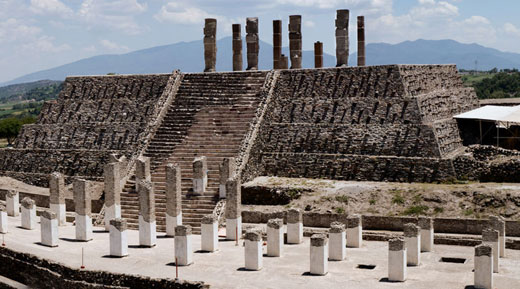by For such a tiny woman, Mother Teresa had big dreams. She set out to change the world, one person at a time.

Her work with the people she called “the poorest of the poor,” her advocacy for human rights and her tireless faith and gentle demeanor made her savior to thousands. But her grand goals were based on a simple commitment to give.
“Before you speak, it is necessary for you to listen, for God speaks in the silence of the heart.”
Mother Teresa was born Agnes Gonxha Bajaxhiu on Aug. 26, 1910. She was the youngest child of a humble Albanian family in Skopje, Macedonia. Her father passed away when she was 8, and by the time she turned 12, she knew her calling was to be a missionary. She left home at 18 to join the Institute of the Blessed Virgin Mary, or the Sisters of Loreto, in Ireland. She chose the name Sister Mary Teresa after St. Therese of Lisieux, and a few months later, left for Calcutta, India, to join the sisters there working as missionaries.
Sister Teresa took her first vows as a nun and began teaching at St. Mary’s School for girls. She taught in Calcutta until 1948, becoming the school’s principal in 1944. During that time, she also made her final profession of vows, becoming Mother Teresa. As a teacher, she was known as unselfish, loving and joyful, and she showed a natural bent for hard work and organization.
“When a poor person dies of hunger, it has not happened because God did not take care of him or her. It has happened because neither you nor I wanted to give that person what he or she needed.”
During her nearly 20 years in India up to 1948, Mother Teresa witnessed profound suffering and poverty. In 1946, while riding on a train from Calcutta to Darjeeling, she later remembered hearing a calling from God: “I heard the call to give up all and follow Christ into the slums to serve Him among the poorest of the poor. It was an order. I was to leave the convent and help the poor while living among them.”
She set out to establish a community dedicated to serving the poorest of the poor. After two years of planning and prayer, she received permission from the Catholic Church to leave the convent school and devote herself full time to her calling. She dressed in a white sari with a blue border—what would become her daily costume for the rest of her life.
“Let there be kindness in your face, in your eyes, in your smile, in the warmth of your greeting. Always have a cheerful smile. Don’t only give your care, but give your heart as well.”
Daily, Mother Teresa visited families living in slums, nursing those weak with hunger and dying of tuberculosis. She started an outdoor school for destitute children, and focused on returning dignity to the poor, despite all the indignities they suffered. With the help of volunteers, including her former students, along with increasing fi nancial donations, she soon expanded her work for “the unwanted, the unloved and the uncared for.”
In 1950, Mother Teresa received permission from Pope Paul VI to establish the new congregation of the Missionaries of Charity in Calcutta. Under her guidance, the sisters traveled to other parts of India, spreading a message of hope to people in need, regardless of religious affiliation.
People of all nationalities soon joined her cause, and international media began to acknowledge her remarkable sacrifice. Over the years, other branches of the order, including lay missionaries, were added, and the society became an International Religious Family. Today, foundations on every continent serve as hospices and homes for the destitute and those suffering from HIV/AIDS, tuberculosis, alcoholism and leprosy. The society’s members oversee orphanages, schools and children’s and family counseling services, as well as provide relief work and aid to refugees in times of natural disaster.
“Little things are indeed little, but to be faithful in little things is a great thing.”
Mother Teresa believed no act of kindness too small to have impact. She encouraged people to look for the needy in their neighborhoods, even in their own homes: “There is a terrible hunger for love. We all experience that in our lives—the pain, the loneliness. We must have the courage to recognize it. The poor you may have right in your own family. Find them. Love them.”
She received numerous awards over her lifetime, including the Indian Padmashri Award, the Pope John XXIII Peace Prize, the Kennedy Prize, the Nehru Prize, the Balzan Prize, the Nobel Peace Prize, the United St a t e s P r e s ident i a l Med a l o f F r e e dom and the Congressional Gold Medal.
“Holiness is not the luxury of the few; it is a simple duty, for you and for me…”
Despite her public image as a heroic figure, Mother Teresa suffered decades of inner turmoil. Letters and journal entries released after her death reveal her periodic bouts of doubt and emotional agony. In 1957, after she founded the Missionaries of Charity, she wrote to the archbishop of Calcutta about her personal crisis: “I find no words to express the depths of the darkness.” These periods of doubt and perceived disconnectedness continued until her death.
Despite her painful personal journey, Mother Teresa found the courage and dedication to continue her work with the poor. Even on days when she experienced deep despair and a crisis of faith, she got out of bed, prayed and went out into the streets to help those who needed her. Over the years, she came to believe that this inner struggle allowed her to more fully experience her convictions and empathize with those she wished to help.
“Love begins at home, and it is not how much we do, but how much love we put in the action that we do.”
Mother Teresa continued her active role as superior general of the Missionaries of Charity until the last year of her life, despite health problems. When she blessed her successor in 1997, the society had nearly 4,000 sisters, 300 brothers and more than 100,000 lay volunteers who oversaw 610 houses in 123 countries. She made a final visit to Pope John Paul II before she passed away in Calcutta, Sept. 5, 1997.
The government of India honored her with a state funeral, and today her tomb remains a place of pilgrimage and prayer for thousands of visitors.
In October 2003, Pope John Paul II beatified Mother Teresa, bestowing on her the title of Blessed Teresa of Calcutta, thrilling a crowd of 300,000 gathered in St. Peter’s Square. Beatification is the third step in the four-step process of canonization in the Catholic Church.
Mother Teresa’s life serves as a lesson in how one can accomplish great things by working diligently and selflessly on small things daily. “As I often say to people who tell me that they would like to serve the poor as I do,” Mother Teresa said, “ ‘What I can do, you cannot. What you can do, I cannot. But together we can do something beautiful for God.’ ”









































